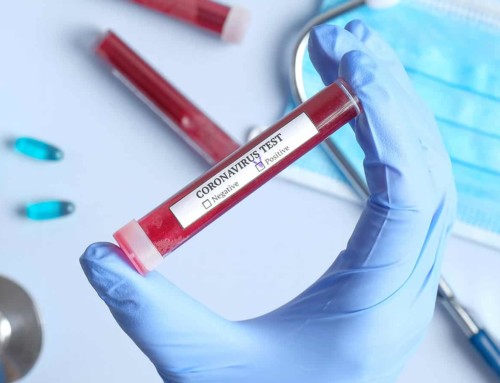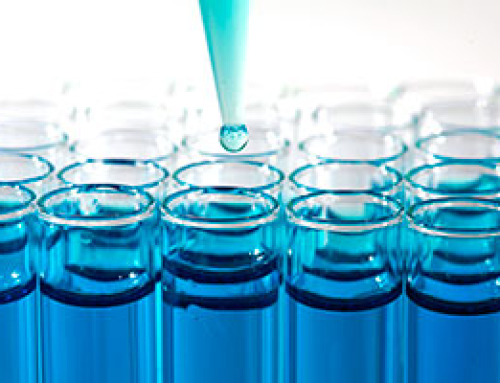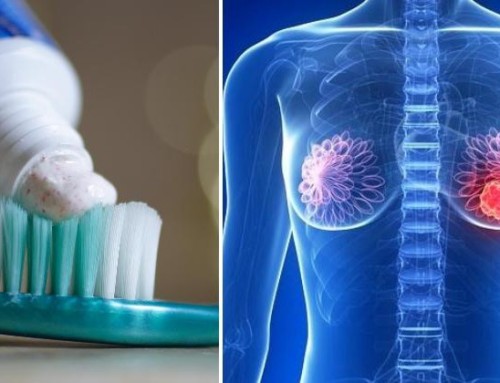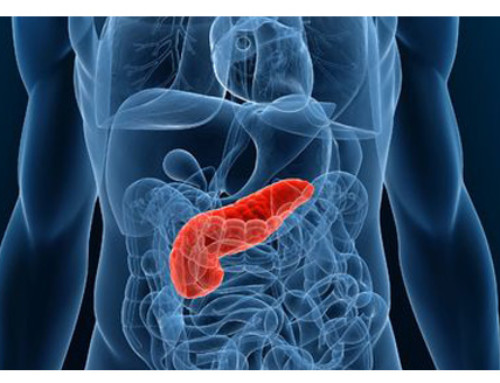|
|||||||||||||||||||||||||||||||||||||||||||||||||||||||||||||
| Hae-Jeong Park, Seo-Hyun Yoon, Long-Shan Han, Long-Tai Zheng, Kyung-Hee Jung, Yoon-Kyung Uhm, Sung-Vin Yim, Joo-Ho Chung, Department of Pharmacology, Kohwang Medical Research Institute, College of Medicine, Kyung Hee University, Seoul 130-701, South Korea Je-Hyun Lee, Ji-Seon Jeong, Woo-Sang Joo, Seon-Pyo Hong, Department of Oriental Pharmaceutical Sciences, College of Pharmacy, Kyung Hee University, Seoul 130-701, South Korea Supported by a grant of the Oriental Medicine R&D Project, Ministry of Health and Welfare, Republic of Korea, No. 03-PJ9-PG3-21600-0014 and No. 0405-OM00-0815-0001 and Korea Institute of Oriental Medicine Correspondence to: Seon-Pyo Hong, Department of Oriental Pharmaceutical Sciences, College of Pharmacy, Kyung Hee University, Seoul 130-701, South Korea. seonhong@khu.ac.kr Telephone: +822-961-9207 Fax: +822-966-3885 Received: 2005-03-28 Accepted: 2005-04-09Abstract AIM: The genes were divided into seven categories according to biological function; apoptosis-related, immune response-related, signal transduction-related, cell cycle-related, cell growth-related, stress response-related and transcription-related genes.METHODS: We compared the gene expression profiles of SNU-C4 cells between amygdalin-treated (5 mg/mL, 24 h) and non-treated groups using cDNA microarray analysis. We selected genes downregulated in cDNA microarray and investigated mRNA levels of the genes by RT-PCR.RESULTS: Microarray showed that amygdalin downregulated especially genes belonging to cell cycle category: exonuclease 1 (EXO1), ATP-binding cassette, sub-family F, member 2 (ABCF2), MRE11 meiotic recombination 11 homolog A (MRE11A), topoisomerase (DNA) I (TOP1), and FK506 binding protein 12-rapamycin-associated protein 1 (FRAP1). RT-PCR analysis revealed that mRNA levels of these genes were also decreased by amygdalin treatment in SNU-C4 human colon cancer cells.CONCLUSION: These results suggest that amygdalin have an anticancer effect via downregulation of cell cycle-related genes in SNU-C4 human colon cancer cells, and might be used for therapeutic anticancer drug.ã 2005 The WJG Press and Elsevier Inc. All rights reserved.Key words: Amygdalin; SNU-C4; cDNA microarray; Cell cyclePark HJ, Yoon SH, Han LS, Zheng LT, Jung KH, Uhm YK, Lee JH, Jeong JS, Joo WS, Yim SV, Chung JH, Hong SP. Amygdalin inhibits genes related to cell cycle in SNU-C4 human colon cancer cells. World J Gastroenterol 2005; 11(33): 5156-5161 http://www.wjgnet.com/1007-9327/11/5156.aspINTRODUCTION The incidence of colorectal cancer has been increasing rapidly since 1975 [1] with about 300 000 new cases and 200 000 deaths in Europe and USA every year[2,3]. Death from colorectal cancer is the second commonest cause of any cancer in men in the European Union[4]. The stage of the disease is an important effect to long-term survival of colorectal cancer. If detected early, it may be curable by surgery. But once metastases develop the prognosis becomes poor. At least 40% of patients with colorectal cancer develop metastases during their illness[5]. Although various therapies as surgery, radiotherapy, and chemotherapy are used on advanced cancer, the most effective approach is yet to be discovered. Amygdalin is ingredient of Prunus persica Batsch (Persicae semen, Rosaceae), Prunus armeniaca L. var. ansu Max (Armenicae semen, Rosaceae) and Prunus amygdalus Batsch var. amara (Amygdali semen amara, Rosaceae), and these are abundant in the seeds of bitter almond and apricots[6]. The evidence for effect of amygdalin has been reviewed as prevention and control of cancers. Due to cyanide toxicity, there has been controversy for amygdalin as cancer drug[7-9]. However, Moertel et al., demonstrated that, in human, intravenous infusion of amygdalin produced neither cyanidemia nor signs of toxicity but that oral administration resulted in significant blood cyanide levels and that, in one case, oral amygdalin plus almond extract produced transient symptoms of cyanide intoxication and further increase of blood cyanide[9]. Additionally, Fukuda et al.[10], reported anti-tumor effect of amygdalin and other components of Prunus persica seeds. Kwon et al.[13], reported that controversy on anticancer effect of amygdalin was due to its conversion to inactivate isoform, and Persicae semen extract induced apoptosis. Although taking a growing interest and reports for amygdalin as cancer drug, anti-cancer mechanism of amygdalin has not been reported. In this study, we determined whether amygdalin-treated SNU-C4 cells were susceptible to cell death, and compared the expression profiles of SNU-C4 cells between amygdalin-treated group and non-treated group using cDNA microarray analysis. We also performed RT-PCR for genes selected by cDNA microarray analysis.MATERIALS AND METHODS Preparation of amygdalin Both 500 g of Armeniacae semen hatched from the shell and 10 L of 4% citric acid solution were refluxed for 2 h. Filtered when it was still hot, the filtrate was passed through the column packed with HP-20. The substance absorbed within the column was concentrated after it had been eluted by ethanol. 4.2 g of amygdalin (with the yield rate of 0.84%) was obtained by recrystallizing the extract with ethanol. The amygdalin was used after it had been determined to be over 95.0% of purity, by means of high-pressure liquid chromatography (HPLC) to measure its purity (Figure 1). Figure 1 (PDF) Reverse-phase HPLC separation of amygdalin by phosphate buffer. ( A) D-amygdalin standard. ( B) D-amygdalin obtained by our method; peaks: 1, neoamygdalin; 2, D-amygdalin.Cell culture The SNU-C4 cell line was obtained from the Korean Cell Line Bank (KCLB, Seoul, South Korea). Cells were cultured in RPMI-1640 medium (Gibco, NY, USA) supplemented with 10% heat-inactivated FBS (Gibco). Cultures were maintained in a humidified incubator at 37 ℃ in an atmosphere of 50 mL/L CO2, 95% air, and the medium was changed every 2 d. MTT assay Cell viability was determined by 3-(4,5-dimethylthiazol-2-yl) -2,5-diphenyltetrazolium bromide (MTT) assay. Cells were seeded in triplicate at a concentration of 1×105 cells/well on a 96-well plate. SNU-C4 cells were treated with amygdalin at concentrations of 0.25, 0.5, 2.5, and 5 mg/mL for 24 h. After MTT (Sigma, MO, USA) was added to each group, the cells were incubated for 4 h. Then, they were further incubated for 1 h, including the solution in which MTT was dissolved. The viability was measured with a microtiter plate reader (Bio-Tek, VT, USA) at a test wavelength of 595 nm with a reference wavelength of 690 nm. The optical density (A) was calculated as the difference between the reference wavelength and the test wavelength. Percent viability was calculated as (A of drug-treated sample/A of untreated sample)100.cDNA synthesis Total RNA was extracted using RNAzolTM B (TEL-TEST, TX, USA) as per the manufacturer’s protocol. cDNA synthesis was performed with 3DNATM Array 50TM detection method (Genisphere, PA, USA) as per the manufacturer’s protocols. In the control and amygdalin treatment (5 mg/mL, 24 h), cDNA was synthesized from total RNA as follows: 3 mL of RT primer, total RNA and additional nuclease-free water were mixed to form a 29 mL RNA-RT primer mix, which was microfuged briefly, heated to 80 ℃ for 10 min, and immediately transferred to ice. One microliter of the RNase inhibitor Superase-InTM was added to the RNA-RT primer mix. Eight microliters of 5 SuperScript II First Strand Buffer (Gibco), 2 mL of dNTP mix (10 mmol/L each of dATP, dCTP, dGTP, dTTP), 4 mL of 0.1 mol/L dithiothreitol, 2 mL of Superscript II enzyme (400 units), and 3 mL of RNase-free water were mixed in each microtube, and the RNA-RT primer mix was then added. The tubes were then incubated at 42 ℃ for 2 h, and the reaction was heated by adding 7 mL of 0.5 mol/L NaOH/50 mmol/L EDTA. The microtubes were then incubated for denaturation at 65 ℃ for 10 min, and neutralization was carried out by adding 10 mL of 1 mol/L Tris-HCl at pH 7.5. The contents of two tubes were combined to yield a 130 mL cDNA solution in one single tube. The original tubes were rinsed with 16 mL of 10 mmol/L Tris at pH 8.0/1 mmol/L EDTA. Upon completion of the synthesis procedure, the cDNA solution was concentrated by ethanol precipitation. Three microliters of thoroughly vortexed 5 mg/mL linear acrylamide solution was added to the cDNA solution. Six microliters of NaCl and 540 mL of 95-100% ethanol was then added and moderately vortexed. The mixture was then incubated at -20 ℃ for 30 min, centrifuged at >10 000 g for 15 min, and the supernatant was aspirated. The cDNA pellet was washed with 300 mL of 70% ethanol. After centrifuging again at >10 000 g for 5 min, the supernatant was aspirated, and the cDNA pellet was completely dried at 65 ℃ over a period of 10-30 min.Microarray hybridization A cDNA chip of TwinChipTM Human 8K (Digital Genomics, Seoul, South Korea) was used. The concentrated cDNA and 3DNATM were hybridized on two identical arrays in a slide for a duplicate experiment. Two times formamide-based hybridization buffer was thawed and responded by heating at 55 ℃ for 10 min with intermittent inversions, and then microfuged for 1 min. Ten microliters of nuclease-free water was added to the cDNA pellet, and the cDNA was completely resuspended by heating at 55 ℃ for 10 min with intermittent inversions, and then microfuged for 1 min. Ten microliters of nuclease-free water was added to the cDNA pellet, and the cDNA was completely resuspended by heating at 65 ℃ for 10-15 min and vortexing for 5 min. Thirty microliters of hybridization mixture was prepared from 10 mL of cDNA, 15 mL of 2 hybridization buffer, 2 mL of Array50 dT Blocker, and 3 mL of nuclease-free water. The hybridization mixture was incubated at 80 ℃ for 10 min and then at 50 ℃ for 30-60 min. The hybridization mix was then added to the pre-warmed chip. After a disposable coverslip was applied, the chip was incubated overnight in a dark humidified chamber at 50 ℃. After serial washing, the array was incubated for 2 min at room temperature with 95% ethanol. The slide was immediately transferred to a dry 50-mL centrifuge tube and dried by centrifugation for 2 min at 800-1 000 r/min. Array50 capture reagent was then thawed in the dark at room temperature over a period of 20 min and vortexed for 3 s. Thirty microliters of hybridization mixture was prepared from 15 mL of 2 hybridization buffer, 2.5 mL of 3DNA TM capture reagent #1 (Cy3), 2.5 mL of 3DNA TM capture reagent #2 (Cy5), and 10 mL of nuclease-free water. Following gentle vortexing and brief microfuging, the hybridization mixture was incubated at 80 ℃ for 10 min and then at 50 ℃ for 20 min. The hybridization mixture was applied to the pre-warmed chip after it was removed from the incubator. After a disposable coverslip was applied, the microarray was incubated in a dark humidified chamber at 50 ℃ for 2-3 h. After serial washing, the slide was immediately transferred to a dry 50-mL centrifuge tube and dried by centrifugation for 2 min at 800-1 000 r/min, and then transferred to a dark slide box. Scanning and data analysis RT-PCR Table 1 Sequences of the primers used in RT-PCR analysis
Statistical analysis RESULTS Figure 2 (PDF) Cytotoxicity of amygdalin. SNU-C4 human colon cancer cells were treated with various concentrations (0.25, 0.5, 2.5, and 5 mg/mL) of amygdalin for 24 h prior to the determination of cellular viability through 3-(4,5-dimethylthiazol-2-yl)-2,5-diphenyltetrazolium bromide (MTT) assay. Independent experiment was repeated thrice. Results are presented as mean±SE (bP<0.01 vs control group). Analysis of microarray expression data Figure 3 (PDF) Expression pattern in a 8k human cDNA microarray. To normalize intensity ratio of each gene expression pattern, global M method was used in this study. First, the primary data were normalized by the total spots of intensity between two groups, and then normalized by the intensity ratio of reference genes, such as housekeeping genes in both groups. Finally, the expression ratio of control and amygdalin group was converted to log2 ratio of each gene, and was represented by a scattered plot in Figure 4. Figure 4 (PDF) Scattered plot of the normalization results by global M method. Confirmation of cDNA microarray findings by RT-PCR Figure 5 (PDF) Confirmation of cDNA microarray results of downregulated genes by RT-PCR. Five genes, exonuclease 1 (EXO1), ABC, sub-family F (GCN20), member 2 (ABCF2), MRE11 meiotic recombination 11 homolog A (MRE11A), topoisomerase (DNA) I (TOP1), and FK506 binding protein 12-rapamycin associated protein 1 (FRAP1), were analyzed by RT-PCR with total RNA from control and amygdalin (5 mg/mL, 24 h)-treated human colon cancer cells. As an internal control, CYCLOPHILN was amplified. Table 2 (PDF) List of genes downregulated by amygdalin treatment DISCUSSION REFERENCES Science Editor Guo SY Language Editor Elsevier HK |





